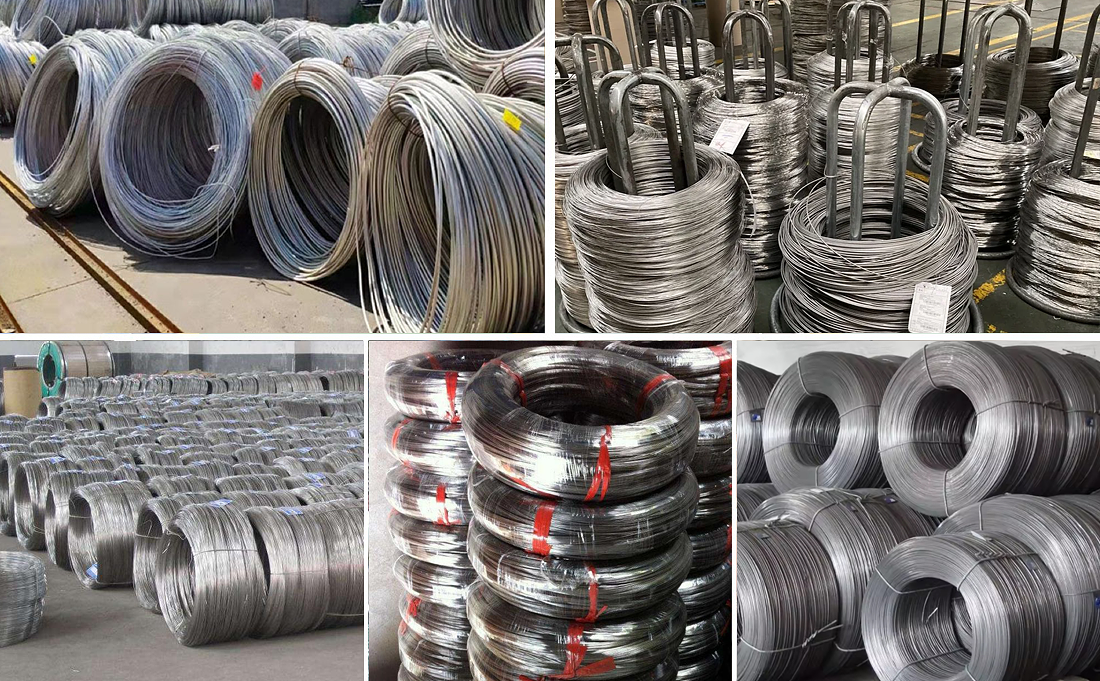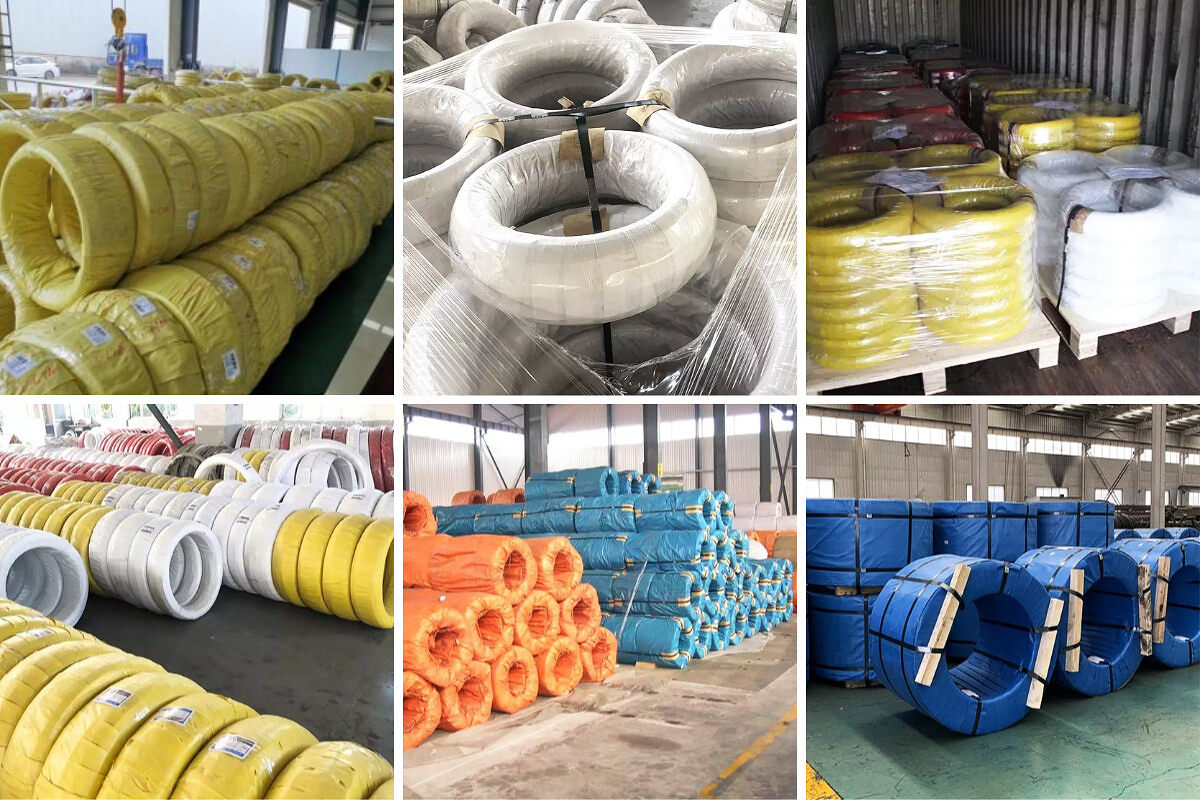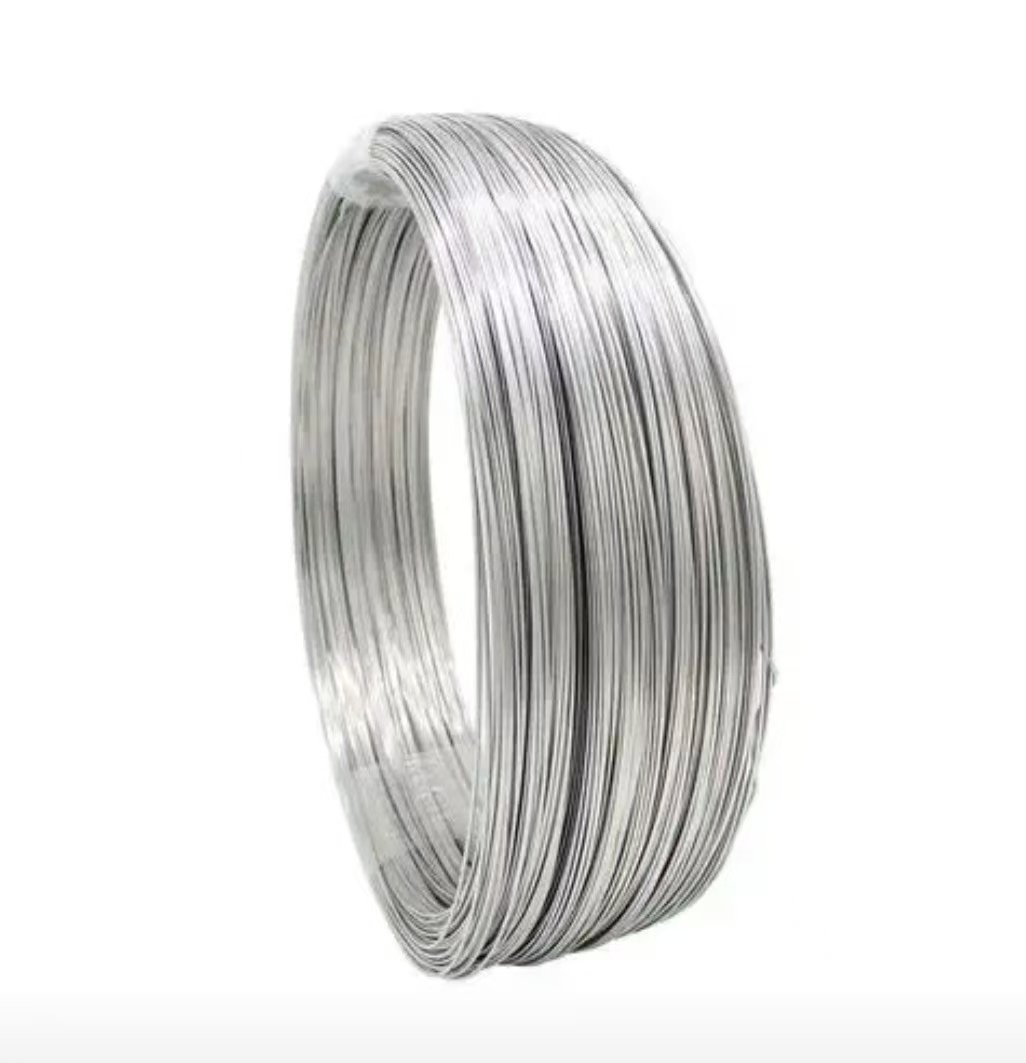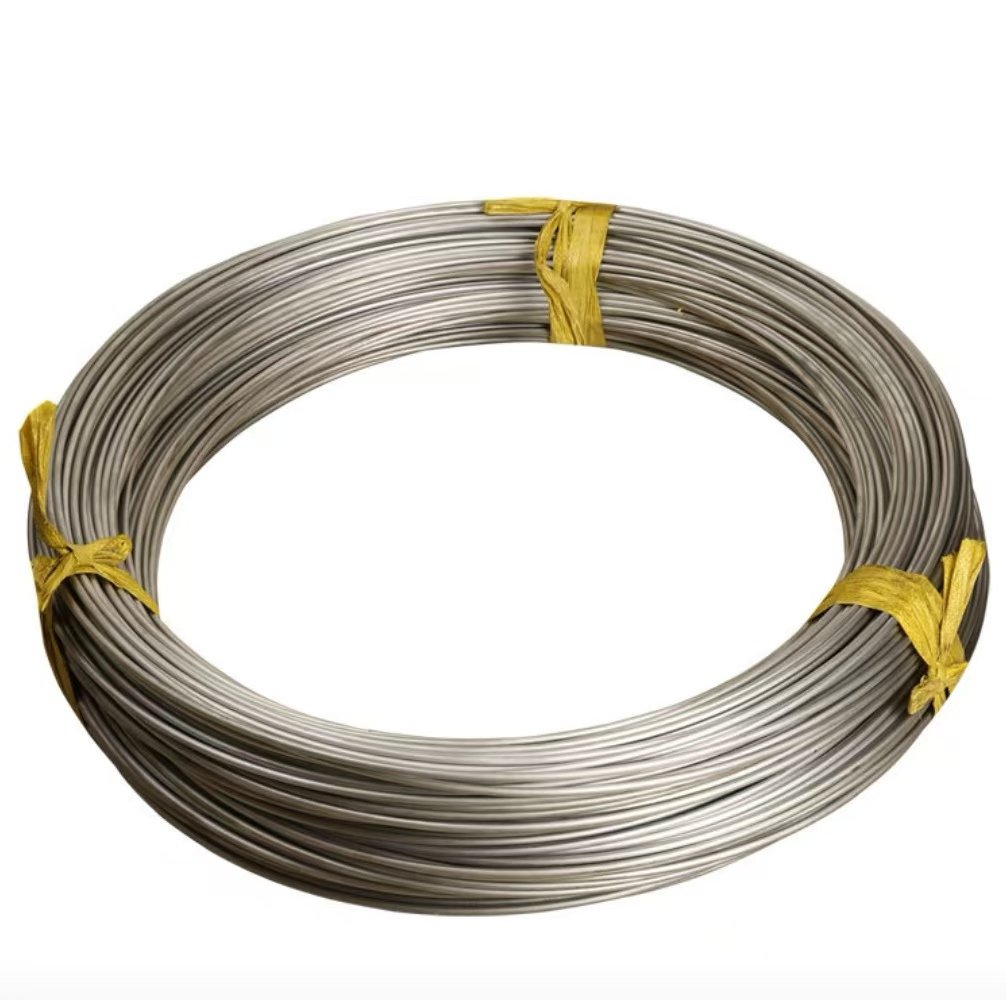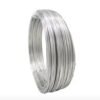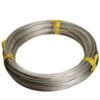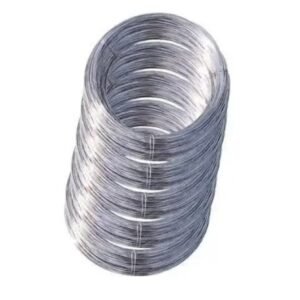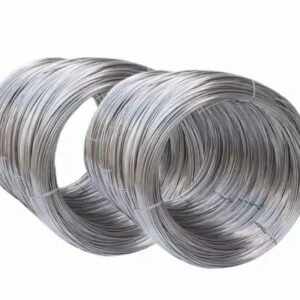The characteristics of 316l stainless steel wire rod mainly include:
Corrosion resistance: 316l stainless steel wire rod has better corrosion resistance than 304 stainless steel due to the presence of molybdenum (Mo), especially in terms of pitting and chloride corrosion resistance.
High temperature performance: Under high temperature conditions, 316l stainless steel wire rod has good oxidation resistance. It can be used intermittently below 1600 degrees and continuously below 700 degrees.
Welding performance: 316l stainless steel wire rod has good welding performance and can be welded by all standard welding methods. When welding, 316Cb, 316L or 309Cb stainless steel filler rods or welding rods can be used for welding according to the purpose
Mechanical properties: The tensile strength of 316l stainless steel wire rod is not less than 485MPa, the yield strength is not less than 170MPa, the elongation is not less than 30%, and the area reduction is not less than 40%
Density and hardness: The density of 316l stainless steel wire rod is 7.93g/cm³, and the hardness is HRB<90, HV<200, HBS<187
| Name | Stainless steel wire rods |
| Main material | 201 /202 /204/ 207/ 207Cu /301 /302 /303 /303B /304 /304L /304N /308 /308L /308LSi /309 / |
| 309L /309LSi /309S /309Si /310/ 310S /314 /316 /316L /316LSi /321 /330 /347 /348 /389 /410 / | |
| 420/430 | |
| Surface finish | Matt or bright |
| Diameter | 0.03-20mm or custom |
| Standard | GB/AISIIS/SUS/UNS/DIN/BS |
| Longueur | 500m-2000m/reel or as your requirement |
| Application | Spring, BBQ mesh, wire forms, cable, clothes hanger, dish rack, |
| Artistic work, fishery, steel wire ball, precise instrument, medical instrument, oil field etc. | |
| Features | Bright surface/good formability/good elasticity/High dimensional accuracy/anti- |
| corrosion/acid-resistant/high temperature resistant/wear-resistant/ hard to age/high | |
| tensile strength/chemical composition stability/purity | |
| Price Term | Ex-Work,FOB, CIF, CFR |
| Package | 1. Carton package |
| 2. Wooden package | |
| 3. As your requirement |
Composition de l'acier inoxydable
L'acier est un alliage de fer et de carbone. Les aciers inoxydables sont des aciers contenant au moins 10,5% de chrome, moins de 1,2% de carbone et d'autres éléments d'alliage. La résistance à la corrosion de l'acier inoxydable et
Les propriétés mécaniques peuvent être encore améliorées par l'ajout d'autres éléments, tels que le nickel, le molybdène, le titane, le niobium, le manganèse, etc.
| Grade | C | Si | Mn | P | S | Cr | Ni | Mo | N | Cu |
| 201 | ≤0.15 | ≤0.75 | 5.5~7.5 | ≤0.060 | ≤0.03 | 16.00~18.00 | 3.5~5.5 | – | – | 0.08 |
| 202 | ≤0.15 | ≤1.00 | 7.5~10.00 | ≤0.060 | ≤0.03 | 17.00~19.00 | 4.0~6.0 | – | ≤0.25 | |
| 301 | ≤0.15 | ≤1.00 | ≤2.00 | ≤0.045 | ≤0.03 | 16.00~18.00 | 6.00~8.00 | – | ||
| 302 | ≤0.15 | ≤1.00 | ≤2.00 | ≤0.035 | ≤0.03 | 17.00~19.00 | 8.00~10.00 | – | ||
| 304 | ≤0.07 | ≤1.00 | ≤2.00 | ≤0.045 | ≤0.03 | 18.00~20.00 | 8.00~10.50 | – | ||
| 304L | ≤0.030 | ≤1.00 | ≤2.00 | ≤0.045 | ≤0.03 | 18.00~20.00 | 9.00~13.00 | – | ||
| 310S | ≤0.08 | ≤1.00 | ≤2.00 | ≤0.045 | ≤0.03 | 24.00~26.00 | 19.00~22.00 | – | ||
| 316 | ≤0.08 | ≤1.00 | ≤2.00 | ≤0.045 | ≤0.03 | 16.00~18.00 | 10.00~14.00 | 2.00~3.00 | ||
| 316L | ≤0.03 | ≤1.00 | ≤2.00 | ≤0.045 | ≤0.03 | 16.00~18.00 | 12.00~15.00 | 2.00~3.00 | ||
| 321 | ≤0.08 | ≤1.00 | ≤2.00 | ≤0.045 | ≤0.03 | 17.00~19.00 | 9.00~13.00 | – | ||
| 430 | ≤0.12 | ≤0.75 | ≤1.00 | ≤0.040 | ≤0.03 | 16.00~18.00 | – | |||
| 2205 | ≤0.03 | ≤1.00 | ≤2.00 | ≤0.030 | ≤0.015 | 22.00~23.00 | 4.5~6.5 | 2.5~3.5 | ||
| 2507 | ≤0.03 | ≤0.08 | ≤1.20 | ≤0.035 | ≤0.015 | 24.00~26.00 | 6.00~8.00 | 3.0~5.0 | ||
| 904L | ≤0.02 | ≤1.00 | ≤2.00 | ≤0.045 | ≤0.035 | 19.00~23.00 | 23.00~28.00 | 4.0~5.0 | 1.0~2.0 | |
| INCONEL028 | ≤0.03 | ≤1.00 | ≤2.50 | ≤0.030 | ≤0.030 | ≤28.0 | ≤34.0 | ≤4.0 | ≤1.4 | |
| MONEL400 | ≤0.30 | ≤0.5 | ≤2.00 | – | ≤0.024 | – | ≥63.0 | – | ≤34.0 | |
| INCONEL800 | ≤0.10 | ≤1.00 | ≤1.50 | – | ≤0.015 | ≤23.0 | ≤35 | 4.0~5.0 | – | ≤0.75 |
